From smart patches to…smart urine tests
| Jan 26 |
Monitoring and analyzing sweat and heat is one of the most complex areas of biometric sensing. This has become extremely important as athletes are sometimes exposed to very high temperatures.
Take the Australian open tennis for example which is currently taking place in Melbourne Australia. Last December in Australia, the country was exposed to very high temperatures with an average of 105.6 degrees, or 40.9 degrees Celsius, breaking the record of 104.5, or 40.3 Celsius.
Playing under those types of conditions has become very challenging for most athletes. This is another reason why over the past few years we have seen a lot of innovation in the area of sweat and heat sensing. We plan to cover the key technology vendors in this area later on in this analysis.
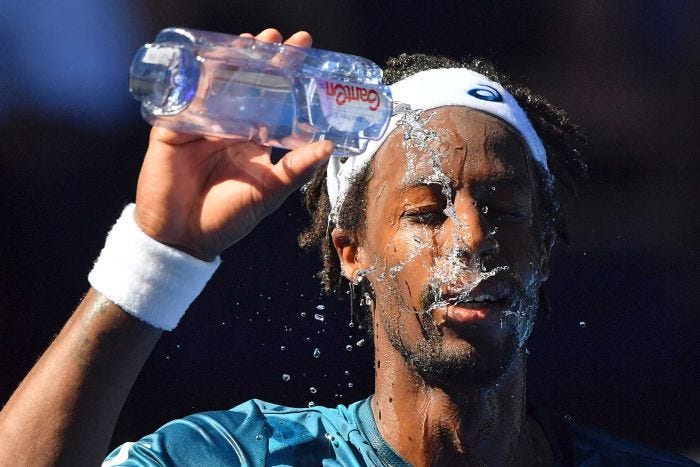 Picture: Montfils, Australian Open Tennis
Picture: Montfils, Australian Open Tennis
So why is monitoring and preventing dehydration and heat stress issues is important in elite sports?
Many athletes endure vigorous or prolonged physical activity (i.e. during endurance sport or exercise). This can often lead to an increase in the body’s core temperature. Resulting in a higher sweat rate, an increase in body temperature and physical activity leads to the loss of bodily fluids and electrolytes and can cause mild to moderate dehydration.
When exercising, athletes lose fluid and electrolytes through sweat which can cause dehydration. Because dehydration can affect their mental and physical state, it can lead to problems that affect their performance, including::
- Cramps, spasms, and soreness
- Fatigue
- Impaired concentration
Optimal sports performance requires an athlete to be at their peak – physically and mentally. Maintaining the proper balance of electrolytes and fluids will help athletes avoid performance pitfalls of dehydration. Symptoms of dehydration, such as headaches and fatigue, can hinder their athletic performance. Drinking sugary sports performance drinks doesn’t provide the necessary electrolytes needed to recover after sports or exercise.
A study out of the European Journal of Applied Physiology found that when participants lost 3% of their body weight in water, overall resistance exercise performance was impaired.
Participants were not able to complete as many repetitions, had higher ratings of perceived exertion, and experienced delayed heart rate recovery, meaning it took longer for their heart rate to return to normal.
Researchers at the University of Connecticut found similar results when they examined the impact of dehydration on resistance training.
They found that a 2.5% decrease in body weight led to significantly less work being completed during multiple sets of back squats.
As shown in the chart below, according to the Internal Journal of Sports Medicine, there is a real impact of dehydration on the human’s body depending on the percentage body weight loss.
A 5% decrease in body weight leads to heat exhaustion. But things get much worse once we reach a 7% decrease in body weight as athletes often start suffering from hallucinations. Finally a 10% decrease in body weight often leads to heat stroke and circulatory collapse. This point here is that dehydration can have disastrous consequences on athletes’ performance and health if it is not monitored carefully in real time.
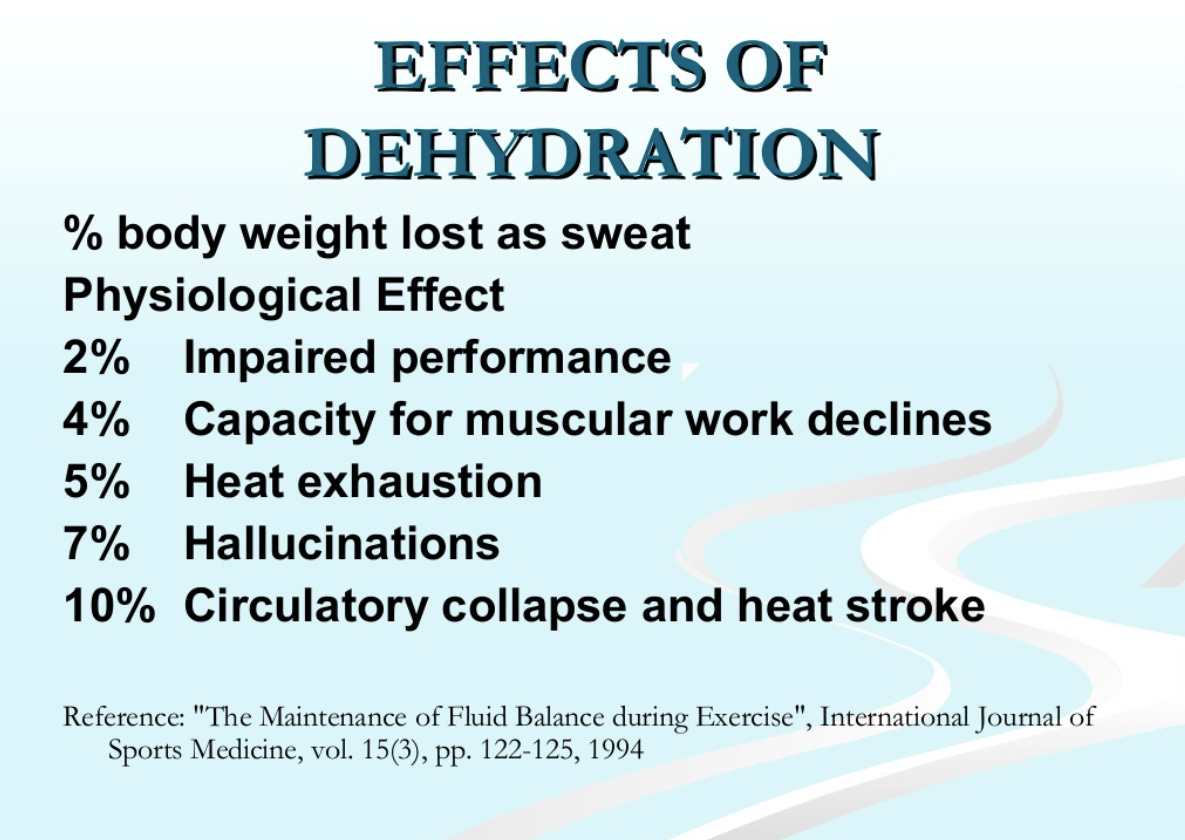 Even being mildly dehydrated can impact the performance of athletes.
Even being mildly dehydrated can impact the performance of athletes.
In fact, if athletes are only mildly dehydrated they’re 114% more likely to make an error, which is similar to drinking low levels of alcohol, according to the research carried out in the UK by Loughborough University.
So how many people are affected by dehydration?
In the United States people are drinking more water now than they were 30 years ago. However, the average American still only drinks 1.8 cups a day which is significantly less than the 8.5 cups a day that are recommended by the European Hydration Institute, who are one of the world’s leading organizations on human hydration.
Put simply, as shown in the chart below, 75% of Americans suffer from chronic dehydration. We are seeing a similar trend in France with 75% of french people suffering from chronic dehydration. By comparison, 50% of Germans are suffering from chronic dehydration while 80% of Australians suffer dehydration on a daily basis. This can be explained by the hot climate in Australia.
So how much fluid do athletes need every day?
Generally speaking, women require about 90 ounces (11 cups) per day, while men should be getting around 125 ounces (16 cups) per day.
“While you’ll meet some of your fluid needs through foods, about 80% of your recommended intake will come from beverages including soft drinks, coffee, tea, and milk” says Dr. Wildman.
If athletes do any workouts that cause them to sweat, they will need to increase their water intake to compensate for the fluid loss. Workouts under 60 minutes require an extra 2-3 cups of water. Workouts that are longer, more intense, or both will require more fluid intake.
The British Nutrition Foundation clearly states that regular H2O is the best thing to drink to keep yourself hydrated whether you’re young, middle aged or elderly. It’s worth emphasising this fact, as although all liquids will hydrate the human body, some do a much better job than others. Water and fruit juices, for instance, hydrate more effectively than milk and soda drinks.
So how big is the global dehydration monitoring market?
According to a report from Adroit market research, the worldwide dehydration monitoring systems market was valued at $348.7M in 2018 and is anticipated to grow at a CAGR of 9.6% over the forecast period. The main factors driving the growth of dehydration monitoring systems market are people’s changing focus to fitness and intelligent health decisions, accessibility of economical and enhanced types of dehydration monitoring solutions, and the accessibility of the multiple technologies.
 Another reason that triggers market development is the increase in consumer demand for the non-invasive techniques (e.g. smart patches..) for dehydration monitoring. Other factors contributing to market growth are growing geriatric population and the advanced usage of dehydration monitoring systems in the diagnosis of multiple illnesses.
Another reason that triggers market development is the increase in consumer demand for the non-invasive techniques (e.g. smart patches..) for dehydration monitoring. Other factors contributing to market growth are growing geriatric population and the advanced usage of dehydration monitoring systems in the diagnosis of multiple illnesses.
So who are the key players in the sweat and heat sensing and monitoring market today?
Here is a quick overview of key vendors focusing on this emerging area.
- Kenzen:
HQ: New York, NY
Amount of money raised: $8M
Website: Kenzen
Kenzen is a NY based wearable startup that built a smart patch capable of measuring in “real time” HR, CBT (Core Body Temperature), sweat volume, and activity. What is also unique about Kenzen solution is that the system is capable of understanding the “baseline” (norm) for each individual based on a proprietary solution.
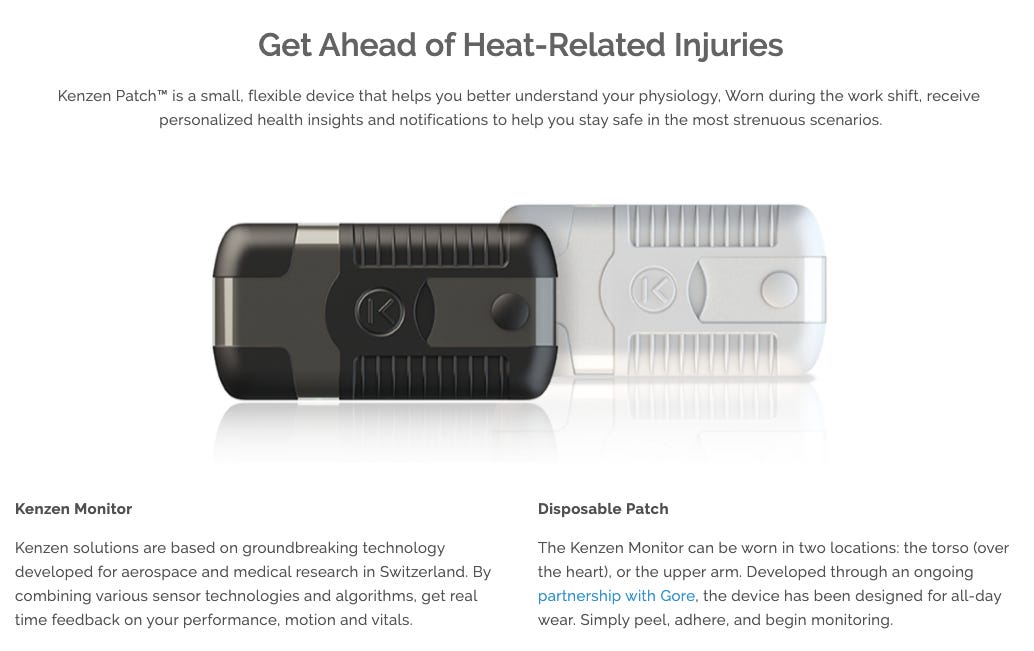 The Kenzen solutions comes with a mobile application (Android and iOS) capable of sending heat stress alerts. Users can then report their symptoms, and what actions were taken. They can also view their historical data.
The Kenzen solutions comes with a mobile application (Android and iOS) capable of sending heat stress alerts. Users can then report their symptoms, and what actions were taken. They can also view their historical data.
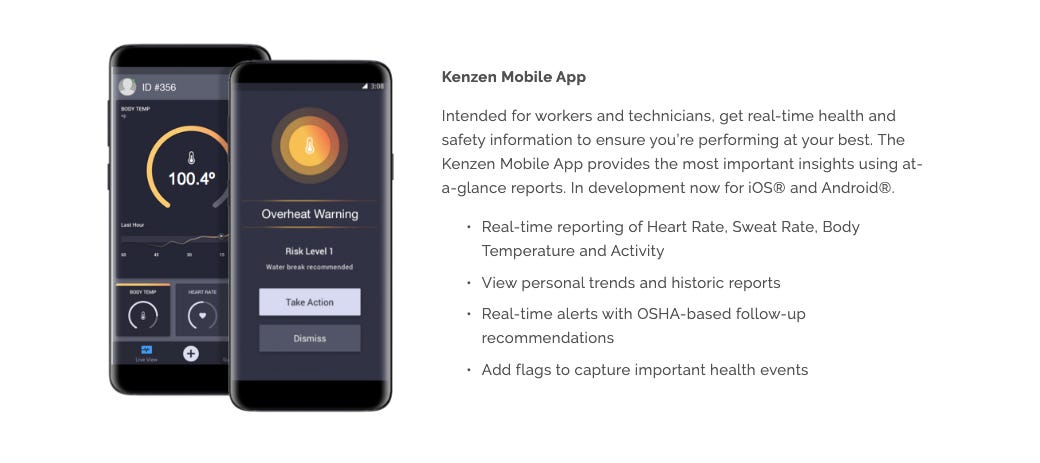 Kenzen also provides a dashboard allowing safety professionals to monitor various athletes at the same time. The athletes in the most critical conditions and who require immediate attention, will show up at the top of the dashboard.
Kenzen also provides a dashboard allowing safety professionals to monitor various athletes at the same time. The athletes in the most critical conditions and who require immediate attention, will show up at the top of the dashboard.
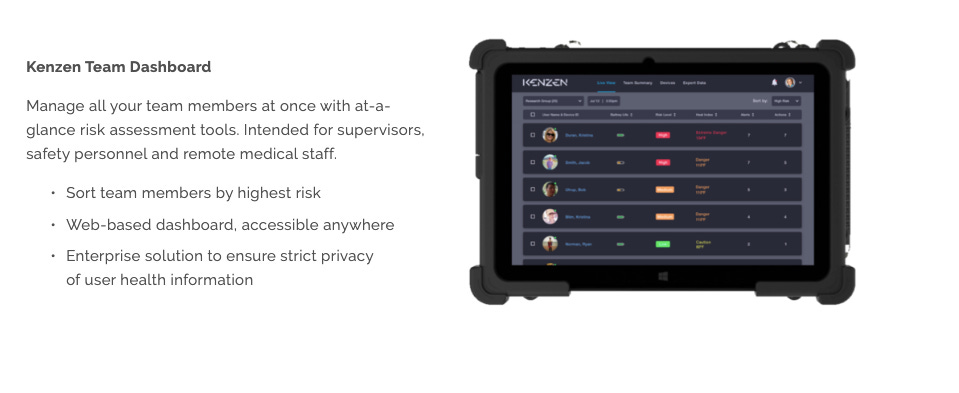 Picture: Kenzen’s team dashboard
Picture: Kenzen’s team dashboard
It is worth pointing out that Kenzen originally started in sports but is now solely focused on the industrial oil & gas renewable energy and construction space to help prevent workers’ dehydration and heat stress injuries.
⬆️ The Upside: We believe that Kenzen currently has one of the best non invasive solutions on the market today. What is unique about their solution is the fact that they can measure sweat volume in “real time’ and understand the baseline of each individuals. The form factor (smart patch) is also a key competitive advantage. However, the company moved away from sports at the moment to address a bigger market: The industrial market.
- Gatorade
HQ: Chicago, IL
Amount of money raised: NA (Public company, owned by Pepsico)
Website: Gatorade
Gatorade is another key player in the hydration assessment space. It passively measures an athlete’s sweat rate and electrolyte composition. Unlike the Kenzen patch, the Gatorade patch does not capture sweat volume in “real time”. Instead the user has to scan the patch with a companion smartphone app at the end of the workout, and then the patch is sent to a lab where results of the sweat analysis are communicated after 24 hours.
More precisely, the platform uses the biometric data gathered from the sweat patch to generate individual hydration recommendations to optimize performance based on weather, intensity, and activity duration.
There are many teams using the Gatorate patch. One of them is the Texas Men’s tennis team. Here is a great video of the Gatorade sweat patch and how it is being used by the Texas Men’s tennis men team to provide individualized hydration plans.
Video: Gatorade, Texas University
⬆️ The Upside: We believe that one of the biggest weaknesses of the Gatorade sweat patch is that it does not measure sweat volume in “real time”. Having to send the patch to a lab and wait 24hrs to get the results defeats the purpose. The whole point of measuring the hydration level is to measure it in real time to prevent dehydration. At the end of the day, Gatorade’s main goal here is to sell more bottles of Gatorade which contains electrolyte, a key ingredient that prevents dehydration.
3. VitalConnect:
HQ: San Francisco, CA
Amount of money raised: $86.7M
Website: VitalConnect
VitalConnect is another key vendors in the area of heat sensing. The company currently offers a smart patch called VitalPatch which is a wearable biosensor designed to measure a patient’s vital signs, including heart rate, electrocardiography (ECG), heart rate variability, R-R interval, respiratory rate, body temperature, activity (including step count), and posture (body position relative to gravity including fall).
The smart patch’s overall solution also measures blood pressure and oxygen saturation via third party devices.
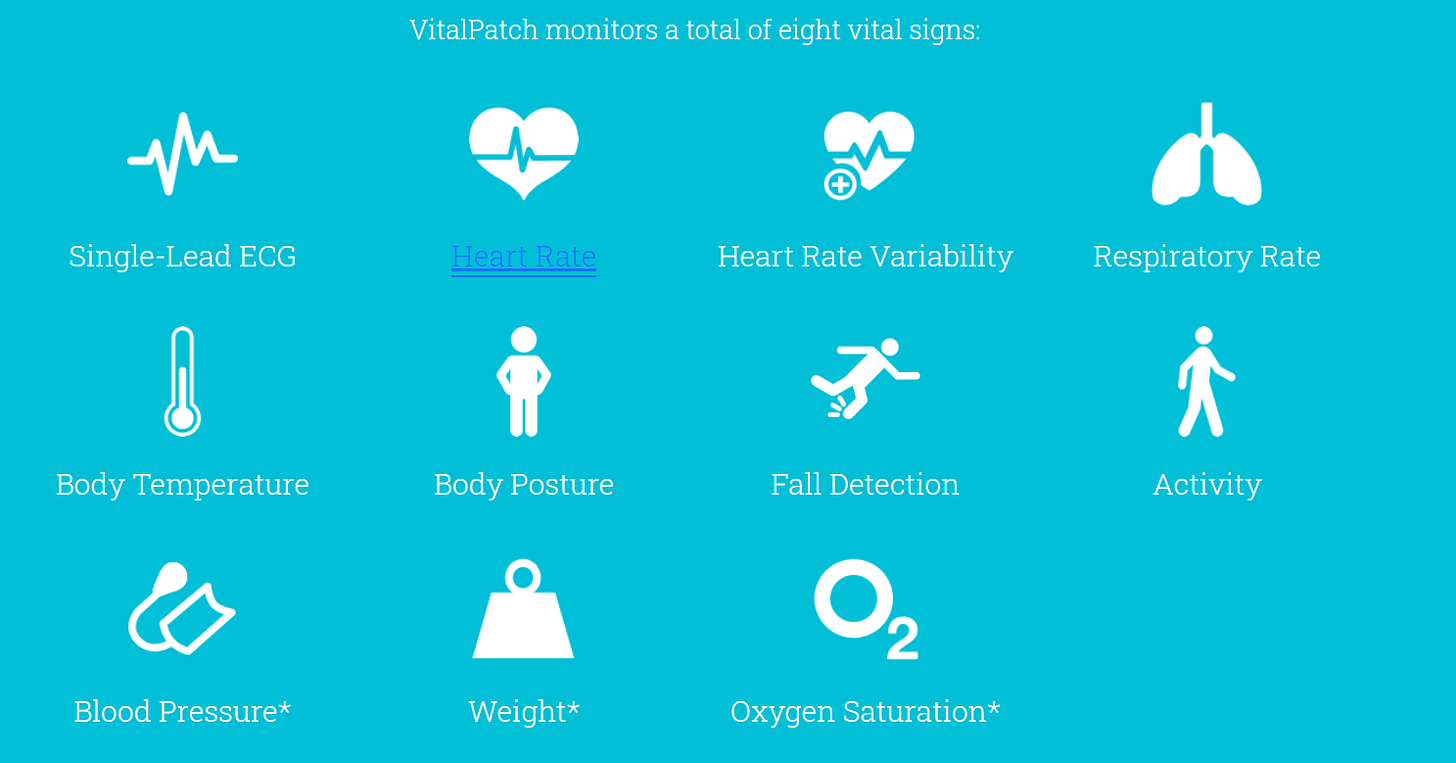 Picture: VitalPatch’s sensing capabilities.
Picture: VitalPatch’s sensing capabilities.
Here is a video that explains how the VitalPatch works:
Video: VitalConnect
⬆️ The Upside: We believe that one of the biggest weaknesses of the VitalConnect patch is that it does not measure sweat volume at all. However, it measures core body temperature (CBT) and HRV which are key competitive advantages, especially with this type of form factor (smart patch). The company is also well funded ($87M) which is important to be able to sustain the business long term.
- Bisu
HQ: Tokyo, Japan
Amount of money raised: $890K
Website: Bisu
Bisu built a product called Bisu Body Coach, a smart urine analyzer which provides instant, actionable insights to improve your health and fitness. Once the user has provided Bisu a sample, the device can give personalized diet advice. It tracks electrolytes, hydration, ketones, pH, and uric acid levels. From these levels, the Bisu can make recommendations on foods the athlete should add to their diet to compensate for nutritional deficiencies. The companion app lets users access this information at any time and provides explanations behind its reasoning.
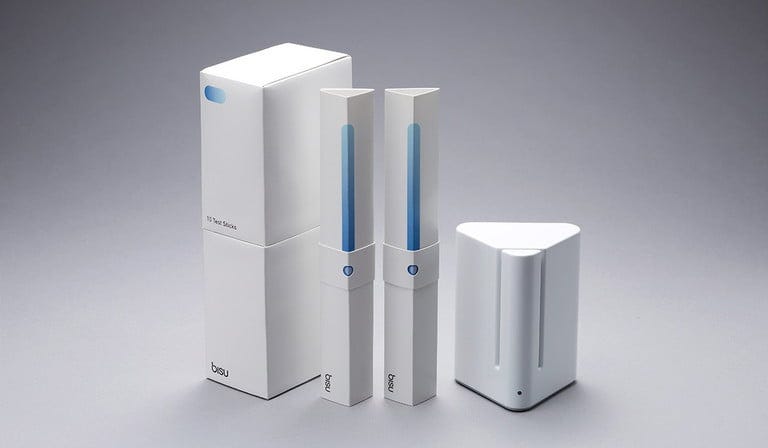 Picture: Bisu smart urine test
Picture: Bisu smart urine test
Here is a screenshot of the Bisu mobile app which tracks current and historical data.
A few months ago we did a podcast interview with Bisu CEO. Here is what he had to say about his product:
“We test urine. That’s something that’s traditionally been for patients in a clinical setting, or checking for some kind of problem that may require a confirmatory diagnosis. We don’t do that. We use urine testing that helps people to understand what their bodies need right now to reach their health and fitness goals, by measuring things like electrolytes, hydration, acid load or oxidative stress induced by physical training. We saw that everyone was looking at the whole clinical-style testing space and bringing clinical testing into the home. But what we want to do is design not for patients, but for people; something that can be part of an athlete’s life in an easy, accessible, helpful way”.
Bisu CEO believes that Bisu urine test is different from traditional methods:
“Our urine tests are performed based on something called absorbance in a controlled environment using real-time measurement, from the beginning of the chemical reaction all the way to the end. With normal urine tests, you usually have to wait sixty to ninety seconds. Our method enables us to extract a much higher precision measurement from a conventional urine test strip pad (..) It’s basically a small, plastic chip where a chemical reaction is performed and enables you to use less sample and also increase sensitivity; and, most importantly, to test new types of sensors that couldn’t be done on a normal urine test strip. Electrolytes is one of those.
Bisu is targeting no more than $200 for the price of its upcoming smart urine test.
“Our target is actually about $100. Per test stick, no more than $2 a test, hopefully $1. So our interest really in making it as reasonable in terms of cost, time and pain – in our case there’s zero pain but we provide a comfortable urine testing experience so people can test frequently. Because the more data you’re able to get on your body, the deeper insights you can get and the better decisions you can take”.
Bisu plans to release detailed accuracy data by the end of Q1 2020.
You can listen to the full podcast interview we did with Bisu CEO here.
⬆️ The Upside: We believe that Bisu smart urine solution is interesting. However one of the biggest downsides of the Bisu solution is that it does not measure hydration in “real time”. The company is also under-capitalized with less than $1M in funding which is a major risk long term. However it can track electrolytes, hydration, ketones, pH, and uric acid levels which is a key differentiator. In fact they are one of the few companies out there that built a smart product capable of measuring electrolyte, and ketones.
- YouCount
HQ: TBD
Amount of money raised: TBD
Website: YouCount
YouCount is another player in the space. However there is still very little information that we know about the company. At CES 2020, Youcount showcased a new device enabling users to test biomarkers using simple urine tests. Concretely the device measures biomarkers such as hydration, ketones, glucose, Ph. According to our sources, it is worth pointing out that the device is not FDA approved yet.
The device can be used to monitor how users’ diet affects their body. Diets such as Ketogenic, Atkins, Vegan, Alkaline, Paleo and others. It can also be used to track how users’ exercise and fitness affects their body through monitoring their biomarker levels.
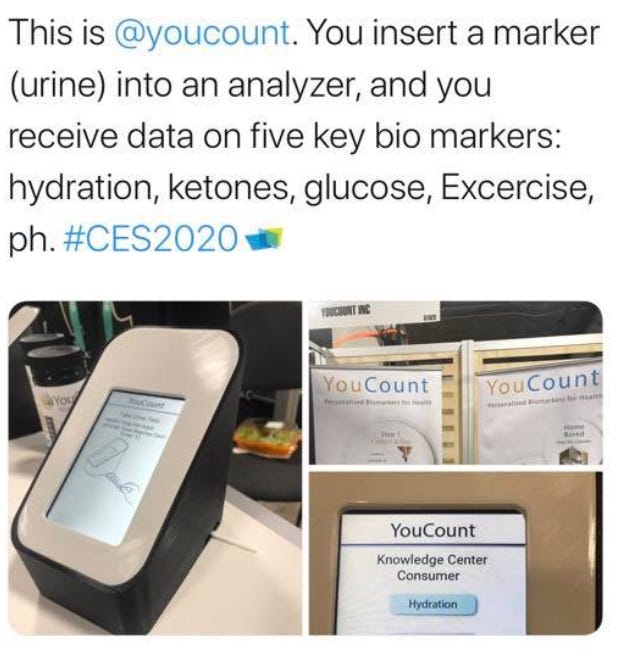 ⬆️ The Upside: We believe that YouCount device shows some potential. This type of product could appeal to a large number of pro teams and leagues to help coaches better monitor players’ diet, recovery, hydration level and more. But as we pointed out earlier, there are other alternative on the market such as Bisu, which built a smart urine analyzer measuring electrolytes, hydration, ketones, pH & uric acid. One of the biggest downsides for YouCount is the fact that it seems to be still very early stage and it does not track hydration in “real time”.
⬆️ The Upside: We believe that YouCount device shows some potential. This type of product could appeal to a large number of pro teams and leagues to help coaches better monitor players’ diet, recovery, hydration level and more. But as we pointed out earlier, there are other alternative on the market such as Bisu, which built a smart urine analyzer measuring electrolytes, hydration, ketones, pH & uric acid. One of the biggest downsides for YouCount is the fact that it seems to be still very early stage and it does not track hydration in “real time”.
Outlook: We believe that the sweat and heat monitoring market is one of the most exciting markets out there when it comes to sports performance monitoring. Let’s face it! It is also one of the most challenging market to crack. Many companies (e.g. MC10) have tried to crack the code in the past and failed. However we believe that we are seeing a new generation of players (Kenzen, Gatorade, Bisu, VitalConnect, YouCount, etc..) who have enough skills, resources and creativity to figure it out. We also expect big players such as Apple, Samsung to enter this space in the future. Some of these startups are likely to become M&A targets. At a higher level, we believe that measuring hydration, core body temperature, and electrolyte in “real time” will become the norm in the world of elite sports in the coming years. It will be a game changer to help coaches prevent injuries which costs lots of money to pro teams nowadays.

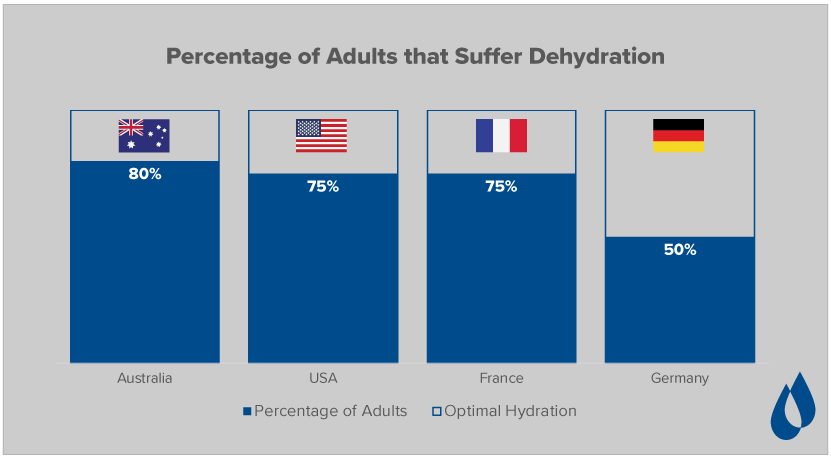

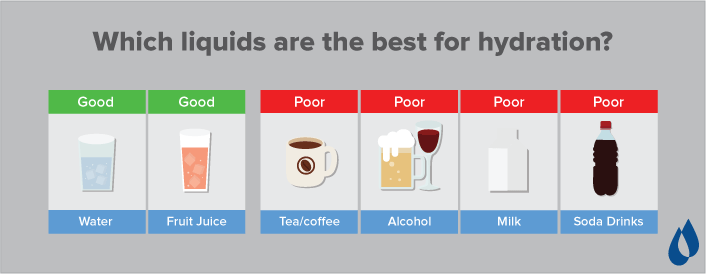
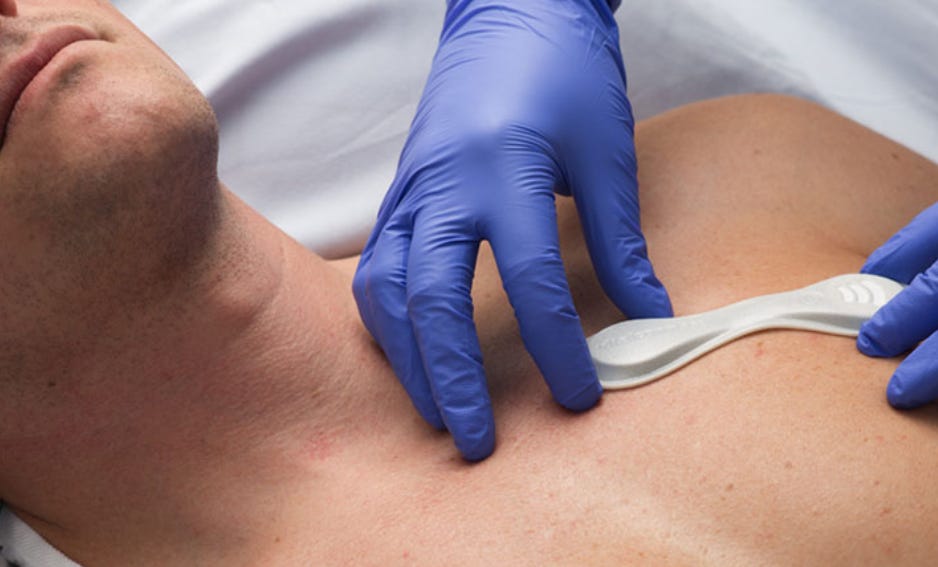
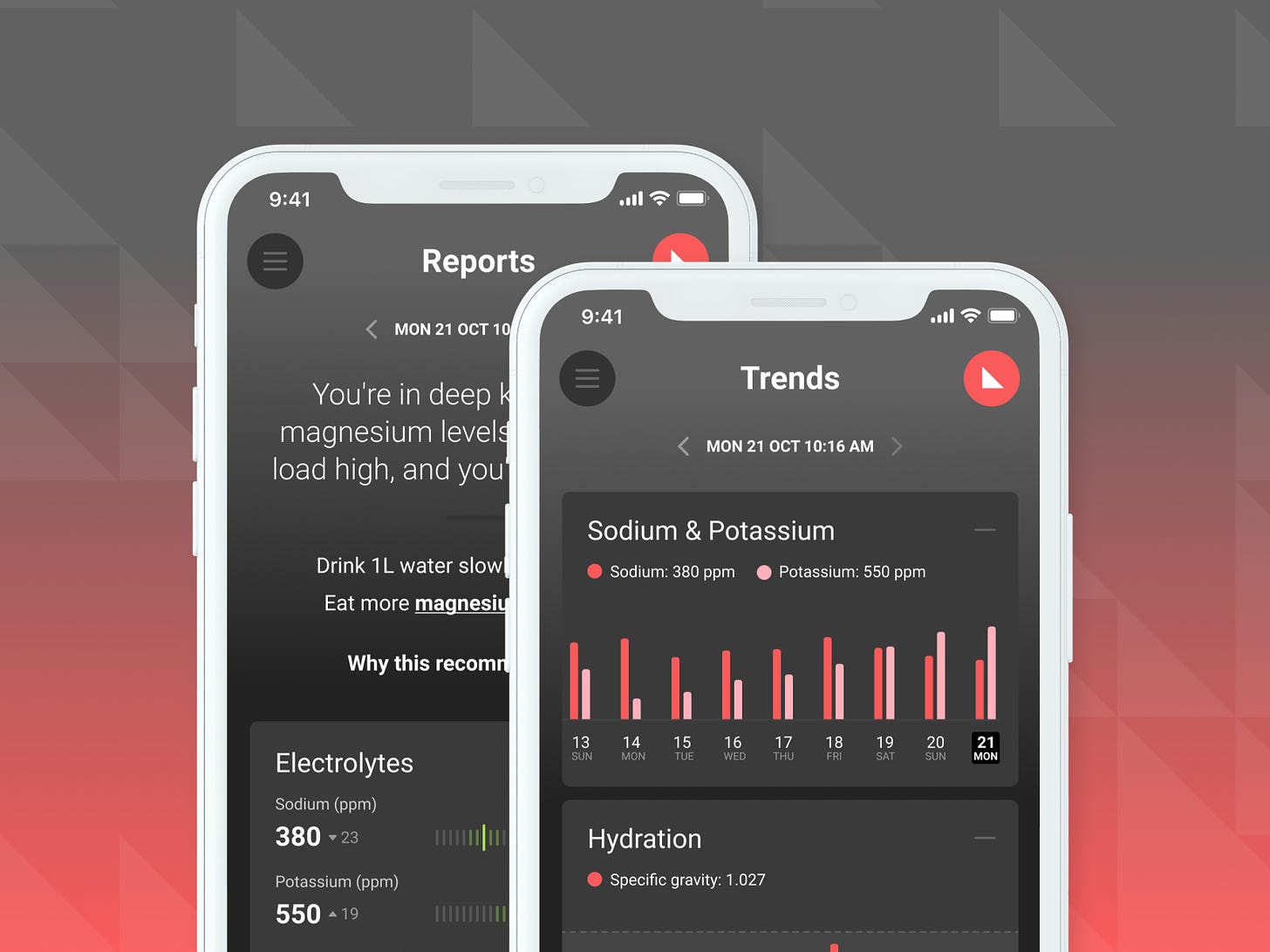
Leave A Comment
You must be logged in to post a comment.